Grand Harvest
2020-11-04
by Niklas Göransson
Of outer dark and inner blight – Grand Harvest is an emerging Swedish death/doom band fuelled by and narrated with observations from the proverbial abyss.
– “Consummatum Est” was conceived over the course of several years, says bass player N.N, and then recorded in April as of our current annus horribilis, 2020. This makes for a selection of nine songs which are versatile yet not disparate, all with our special attention to lyrics and atmosphere as the common theme. The creative process was a valuable learning experience; with a new guitar player in our ranks, as well as a fresh and fortified direction, we have evolved as songwriters and developed efficient working methods. This enables us to create music that resonates both with Dr. Häll‘s lyrics and the forces hidden behind them. The album’s foundation is a blend of death and doom metal, but with an added atmosphere perhaps more associated with black metal. There are also a few surprises in the form of choirs, vocal arrangements, and similar elements – all of which came to us very naturally.
GRAND HARVEST recorded their debut album, “Consummatum Est”, using local studios back in April 2020 – the material was then handed over to Tore Stjerna of Necromorbus Studio for mixing and mastering.
– The original plan was to record everything at Necromorbus, but then the COVID plague struck. Therefore, we decided to track the instruments in Varberg’s Studio Mega; they have an impressive resume of former recording artists and are especially famous for their outstanding drum room. We knew beforehand that we’d need gigantic headroom on the drum tracks in order to get the sound we wanted. All vocals were recorded at South Sound Studio in Staffanstorp, which we’ve used for that purpose before. Once Tore started working on the material, we got the distinct impression that he thought it had something special. He’s not a man of many words, but one could sense it between the lines. We got to talking about the thorny path that is the music business, and, from thereon, asking him to represent us felt like a natural step. Since he liked the material and presentation of GRAND HARVEST, as well as the idea of working with a band ‘from the start’, he accepted and we got ourselves a management deal with NBS Production.
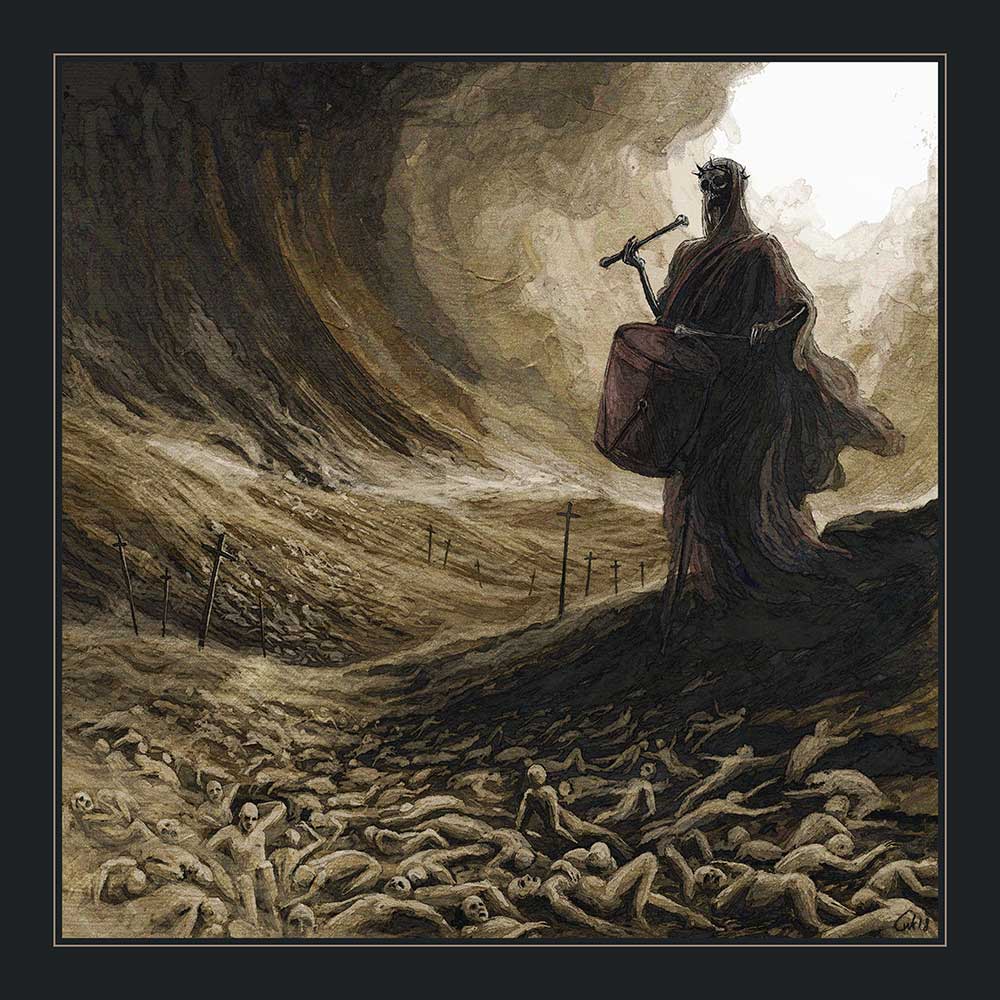
Do you have a label yet?
– No, this is the first thing on Tore‘s agenda right now. It’s important to us that our album reaches its full potential – but, at the same time, we don’t want to compromise with the band’s integrity. So, to start out under the best circumstances, we need a label capable of meeting those criteria. Also, we feel live that performances are crucial in presenting the entity we call GRAND HARVEST; it’s when we’re on stage all the power infused within the music truly takes physical form. We channel this force as it surges through the audience in an energetical exchange of sorts, hopefully leaving a permanent mark within them. This year has certainly been brutal for performing artists of all genres, but we firmly believe the situation will improve.
To compensate for the lack of live shows, GRAND HARVEST have resorted to streaming gigs online. Their September 26 performance at Plan B in Malmö was recorded by the venue and later mixed by Tore Stjerna – the video was then edited by guitarist F.S.
– We’re currently unveiling one live track per week on YouTube, says Dr. Häll. Once all of them have been published, the entire set will be released as a limited cassette tape and then be made available through Spotify, Bandcamp, and so on. Its title will be “Vesperae laesae Maiestatis Coronae”, which roughly translates to ‘Vespers of offence against the crown’, or ‘the corona’ The ambiguity as to the meaning of the latter is intentional; it refers both to the reign of the virus itself and the deity or demiurge behind it. The same applies to the term ‘vesper’, which can mean either ‘evening’ or a form of prayer. As a whole, the title is inspired by the old category of criminal law regarding high treason against God: Crimen laesae Maiestatis Divinae.
I’m told that the opening track, “Sol Maledictor”, served as a compositional turning point for GRAND HARVEST, in that it introduced new musical elements to their repertoire.
– All in all, says N.N, that song paved the way for most things we want people to associate with GRAND HARVEST. The mantric qualities of the slightly monotonous riffs act as the perfect canvas upon which Dr. Häll can paint his array of doom-ridden divinations. The time was also ripe for a more desperate vocal approach than the darker form of death-growl he used before, along with somewhat simpler arrangements as opposed to verbose grandeur. As it were, the gradual shift in our musical direction roughly coincided with some experiences of his that prompted a new lyrical twist.
– “Sol Maledictor” vents personal crisis through the symbolism of nuclear devastation made divine revelation, adds Dr. Häll. The mid-part is my own attempt at Latin verse, somewhat imagined as revealing the future by re-enacting the spirit of doomsday prophecies from the past. As the song climaxes, focus shifts to an inner level. In that sense, I’d like to think it becomes something more profound and heartfelt than your average apocalypse hymn. A speculum of self-immolation and catharsis, perhaps. Yet, likewise, a desperate longing to feel, for one last time, an all-consuming warmth reminiscent of times which – as all things must – have come and gone. And then, the merciful release of night eternal.
– It’s probably apparent that this one had a lot of real blood, tears, and agony poured into it, continues N.N. The Latin part also presented a clear vision of a choir arrangement, which became our first attempt at clean vocals – sung by me. I’d also like to think that we all felt this track turned out something special, as if we’d reached a goal we never even knew was there. It just felt right. Going forward, this raw darkness and simplistic heaviness combined with an esoteric atmosphere is precisely what we wanted to sound like.
Did the completion of this song have anything to do with your decision not to release the EP you recorded in 2018?
– Yes, at least in part. By the time we’d recorded the EP, our new course had begun to sink in and some of the material felt redundant. We knew where we wanted to go – we just hadn’t found the right guidance yet. “Sol Maledictor” was that guide, it led us on the path towards our magnum opus thus far: “Consummatum Est”, the album’s title track. There were other factors taken into consideration in the decision not to release the EP, but our desire to present something that truly represented the band was a major part of it.
With the album finished six months ago and no touring possibilities, I’m assuming you’re focusing on new material?
– Indeed, says Dr. Häll, we’re working on our second album. The destructively creative energies in the band flow freely as of late – we want to harness those powers to get ahead with our craft, so that we can be efficient once a record deal has been signed. For several good reasons, at this early stage little will be revealed about the concepts projected for our next effort. One small clue though: open your heart to the superior Love of the Angel of Death!
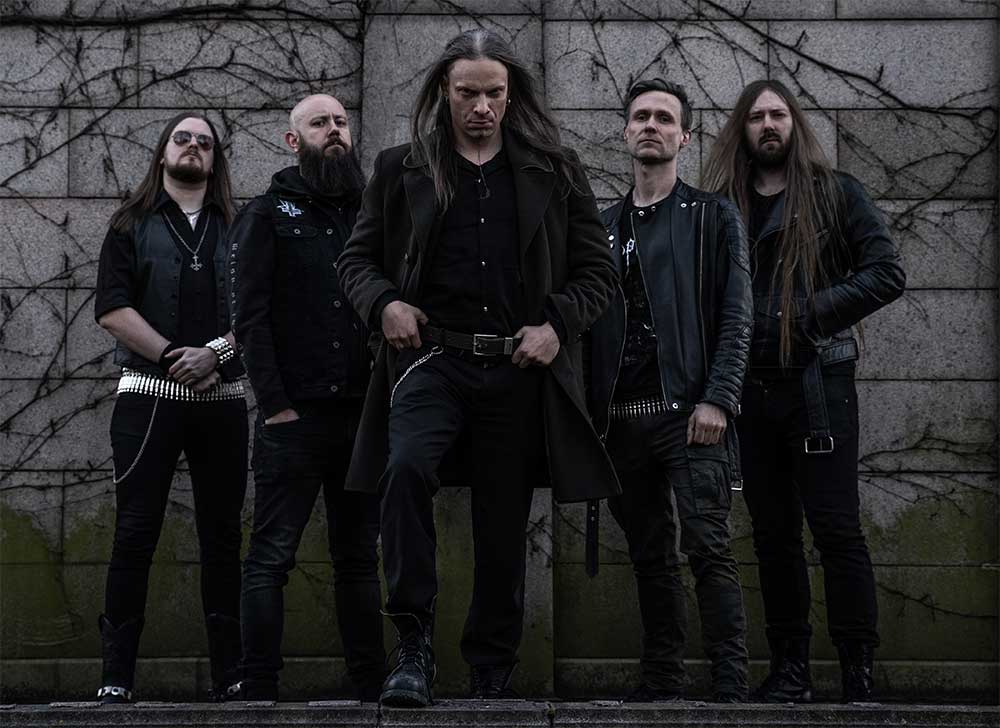
As Dr. Häll implied when explaining “Sol Maledictor”, the recording of “Consummatum Est” was preceded by some manner of ‘deep personal abyss’ – an ordeal which apparently left a heavy mark on the album.
– Indeed, the lion’s share of my lyrics were written in the wake of a severe personal crisis and are inevitably marked by it. In fact, and despite stiff competition, that crisis was the most abysmal fall and devastating experience of my life. Incidentally, it resulted in me accepting, shall we say, darkness in another way… one so far beyond my previous state as to reveal – beneath a comfortable veil of self-serving rationalist platitudes and shallow intellectualised symbolisms – a glimpse of the glorious fucking abyss itself.
It’s tricky to stir riveting discourse about the matter without actually being privy to any details. Referring to said lyrics, “My Desolate Sea” could be interpreted either as lost love or drug dependency.
– I will not speak of the actual events leading up to this, but it was an emotional trauma alright – more profound than anything dope could either induce or relieve. Perhaps it was more of a process, really… not only the events which sparked it in the first place, but everything – past and present – that tied into it. Suffice it to say, the pain inside will never fully go away. So, I thought to myself, ‘This wound won’t heal, and the bleeding won’t cease. Well, then, why not use that precious heart’s blood as ink for the quill, the elixir of life to the glory of death?’ And so that’s what I did. The resulting lyrics reflect a deep resentment towards the misery and tyranny of sentient being in general, and humanity in particular. The vantage points are an esoteric Luciferian gnosis of Death, the mythos of Divine Chaos, and a certain brand of empathic misanthropy. This is then cast in the language of apocalyptic revelation and mystical experience, blended with the aforementioned personal ordeals. So, to put it a bit poetically, they sharpened the essence of the music, the Scythes of the Grand Harvester, towards the conceptual main theme par excellence: the blissful end of all things.
Are these to be regarded as decrees carrying a message, or more as poetic musings?
– None of them propagate any specific ideology or tradition, rather being a blend of many inspirations. They range from ancient mythology to decadent poets such as Baudelaire and Fröding to contemporary philosophy on negative ethics, like the ‘plea for non-being’ as argued by Argentine philosopher Julio Cabrera. All spiced and seasoned with my own delicious dash of poison, of course. These tracks represent the first entries in a mystic-lyrical corpus I call Psalterium Messoris Grandis: the Psalter of the Grand Harvester. Through our social media sites, we’ve started releasing a kind of ‘chronicle’ or ‘poetic grimoire’ manifested around these writings. It’s inspired by the aesthetics of old manuscripts and tractates and has been embellished with sigils and other illustrations of mine. They constitute a loose concept that kind of maps out the direction of our current work.
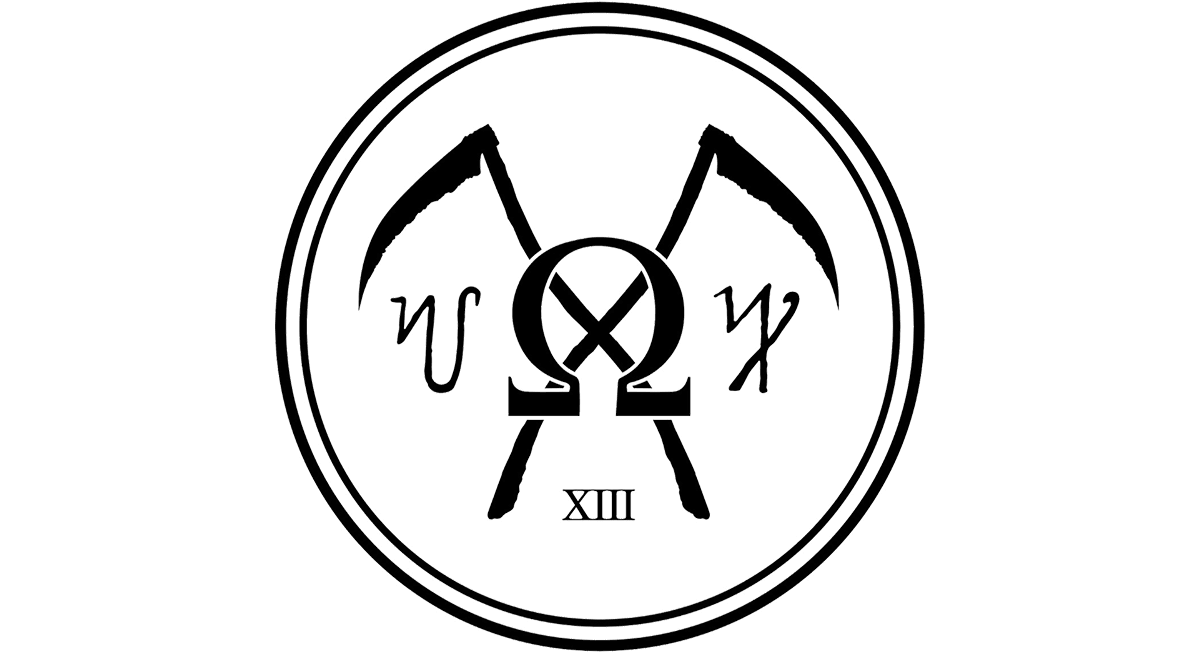
Besides fronting a metal band, Dr. Häll is also a scholar of history. In 2013, he finished his doctoral thesis Skogsrået, näcken och Djävulen. Erotiska naturväsen och demonisk sexualitet i 1600– och 1700-talens Sverige: ’The Forest Nymph, the Neck and the Devil. Erotic nature spirits and demonic sexuality in 17th and 18th century Sweden’. It was presented in book-form by Swedish publishing house Malört the same year. Admittedly, I know very little about how the academic world works, but this topic – folklore with a focus on erotic encounters involving various unsavoury supernatural entities – sounds a bit niched, to say the least.
– Haha! Whether such beings are ‘unsavoury’ depends somewhat on one’s vantage point. But sure, even by the standards of academic history, that subject matter seems rather narrow and exotic. However, bear in mind the abundance of folkloric motifs featuring seductive nature spirits we have here in Sweden; not to mention the many prolific stories of fornication with devils at the Witches’ Sabbath. Consider also the huge significance the early modern era placed on moral and ontological notions such as sex and sin, spirit and body, natural and unnatural, human and non-human, religion and sorcery, God and the Devil, and so forth. After all, these were the times of the great Swedish witch trials: the prevailing worldview was still a magical-religious one.
The neck is a male water spirit typically found lounging around in streams, lakes, and ponds. His archetype occurs under different names throughout all countries in northern Europe with cultures sprung from Germanic mythology. He appears in a number of different shapes, often as a handsome man playing a harp or a violin, and has been known to lure unwary travellers into the water and drown them. Young ladies are deemed especially susceptible. The forest nymphs are female beings who rule the forest and its beast; they enjoy a particular prevalence in communities with strong hunting traditions. Recurring accounts describe her as a beautiful woman with therianthropic features such as a tail or fur, who leads wanderers astray and seduces men she fancies. However, sex with the forest nymph is associated with a number of perils, both mortal and of the soul. Dr. Häll’s doctoral thesis takes a close look on these myths and analyses their origin and nature.
– My sources were judicial records, folktales, ballads, sagas, and works of theology and natural philosophy. Within official Christian tradition, the nature spirits of folk belief, as well as ‘pagan’ deities, had long been considered diabolical apparitions in the vein of the sexually inclined demons called incubi and succubi. In Sweden, this ‘diabolisation’ culminated in the 1600s, thus informing the stance of both Church and secular law. Very different beliefs could be held by other parties, be they practitioners of folk magic or scholars such as natural philosophers. Sexual intercourse – perhaps the most intimate of interactions – with a nature spirit or demon implied more than a moral crux, it also entailed an ontological problem linked to the very definition of reality and the order of the world.
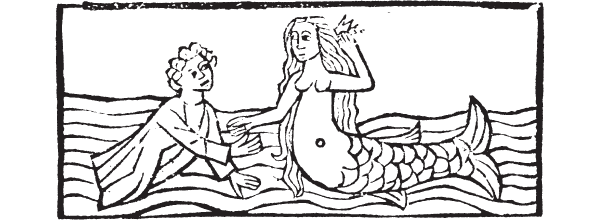
In medieval Sweden, the practise of magic was largely tolerated – unless employed for murder. Attitudes began shifting in 1571, when priests all over the country were encouraged to keep their eyes peeled for signs of sorcery; anyone caught dabbling in the arcane was to be excommunicated. From thereon, cases started popping up all over the country. A number of women confessed under torture that they’d flown to Blåkulla and returned with carnal knowledge of the Devil. Nonetheless, it was a rare occurrence that alleged witches ended up killed: most were fined or banished from the community for a time. Harsher legislation was introduced in 1608, rendering all manner of metaphysical involvement outside the Christian tradition a capital offence. The peak of the Swedish witchcraft craze lasted between the years 1668 to 1676 and has since become known as Det stora oväsendet, or ‘The Great Noise’. Around three hundred accused witches, mostly women, were put to death.
– Court records, presumably unique to the time, show that people back then were put on trial and sometimes even sentenced to death for claiming to have had sex with nature spirits. Prior to my thesis, no comprehensive study of such cases had been done. Besides my longstanding personal interest in magic and witchcraft, that was reason enough. And these are not simply common ‘witch trials’, even though they could develop towards such. For example, it’s obvious that some of the cunning folk – the village specialists of folk magic and healing – earnestly cited nature spirits as the source of their knowledge and power. Sleeping with them could be construed as part of such a relationship; it’s not difficult to imagine how this was viewed by the authorities.
Can you explain what you mean with ‘cunning folk’?
– Well, cunning folk, the ‘wise ones’, or ‘kloka’ in Swedish, were – and in some respects still are – believed to possess special knowledge and abilities, particularly relating to dealings with the supernatural world and the curing of diseases. Their powers were sometimes attributed to, for example, nature spirits, demons, or angels which could then be described as magical tutors and familiars. Cunning folk played one of the most important parts in the local communities of old, particularly rural but also urban ones. A cunning man or woman could be as central a person as, for example, the vicar. Still, in early modern Sweden, few characters were as ambiguously positioned between God and the Devil as the cunning folk. In the wake of the Reformation, the predominant Protestant stance implied a more radical demonisation of magical practices. During the 1600s, and partially the 1700s, folk magic was more severely stigmatised by the Swedish authorities than ever. Cunning folk risked being labelled witches or sorcerers. Thus, there are very interesting sources concerning such persons and notions from this period. The cunning character is an invaluable key to our understanding of early modern culture.
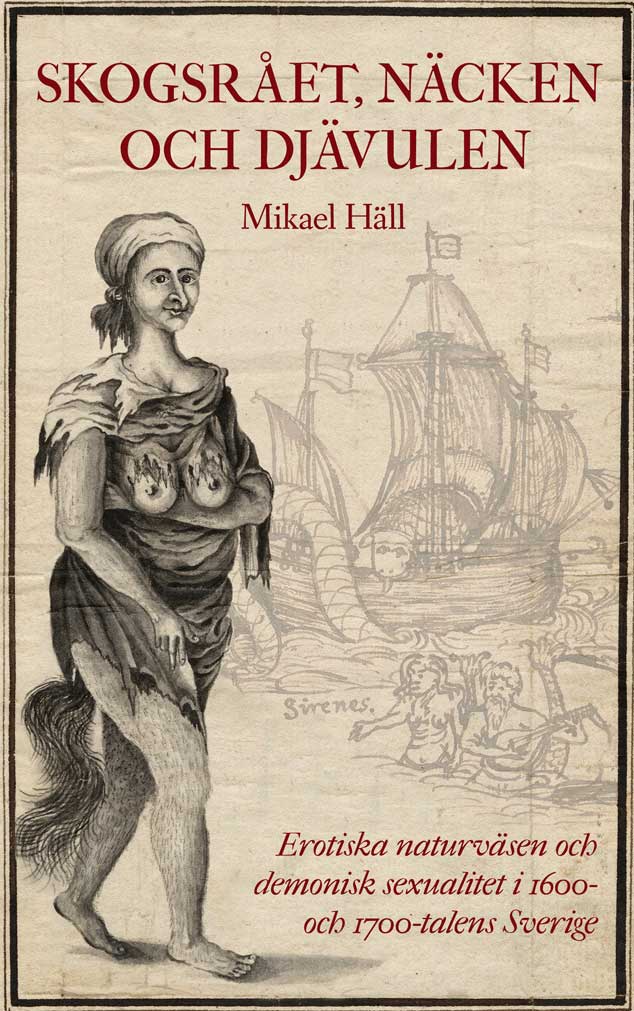
Not only did Dr. Häll rely on judicial trials as sources, he also recounts many of them in the book. There are quite a few compelling cases, so it’s difficult to pick one as an example.
– As both spectacular and still representative, I’d cite a 1707 criminal case against soldier-turned-deserter Sven Jönsson and the forest nymph, the latter of which a kind of ‘composite sketch’ – essentially, a wanted-poster – was drawn. This illustration is actually the main centrepiece on the front-cover of my book. The head of the military court, colonel Anders Sparfeldt, offered a most exceptional interpretation of the soldier’s story about sleeping with the forest nymph. The account itself is reminiscent of similar popular tales. However, since the being allegedly had horse-like traits, and the soldier perceived it as a creature of flesh and blood, the colonel concluded that it was neither a human nor a demon or any other kind of spirit. Nor could it be a common animal, for it spoke and displayed human emotions; thus, seemingly possessing reason and a soul. Therefore, the colonel argued, the creature had to be some kind of ‘human monster’, begotten through the act of bestiality between human and horse. He wrote an extensive letter about all this to the highest judicial authorities, enclosing the drawing based on the soldier’s detailed description.
Colonel Sparfeldt’s analysis was ultimately rejected by the legal system. Nonetheless, Dr. Häll points out they are indicative of how notions concerning bestiality and monsters gained ground in the 1700s, not least among the natural scientists of the time.
– Because of her professed body and behaviour, this forest nymph was categorised in the intersection between humans, animals, and monsters and those of demons or spirits. This most expressively shows how perceptions of beings such as nature spirits and demons are informed by liminality: a form of moral, ontological, and discursive ‘in-betweenness’. The importance here lies in ‘reading’ the bodies of spirits and monsters as ‘texts’. Their many shapes reveal a peculiar mixture of oftentimes culture-specific expressions of beauty and grotesqueness, of animal and human traits, and of magical properties. ‘Reading’ them can be tricky, but it’s precisely their ambiguity and liminality which are revealing. Indeed, the appearances of shapeshifters such as the forest nymph, the neck and the Devil reflect culture-specific norms and boundaries – as well as their transgression. With regard to known Swedish history, the 16 and 1700s in many ways represent the best example of this by demonstrating the value of studying notions of superhuman or extraordinary beings, or whatever we may call them. The great 16th-century alchemist, physician and mystic philosopher Paracelsus stated that sirens, giants, sea monsters, and similar creatures were ‘meaningful signs’ and ‘like a mirror to humans’. His statement is valid still.



